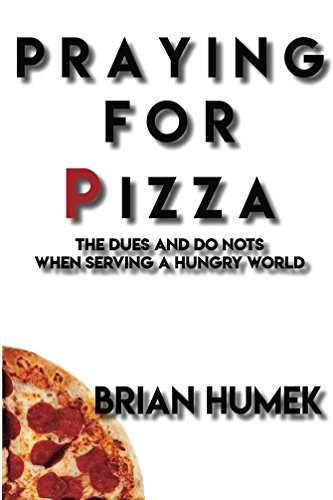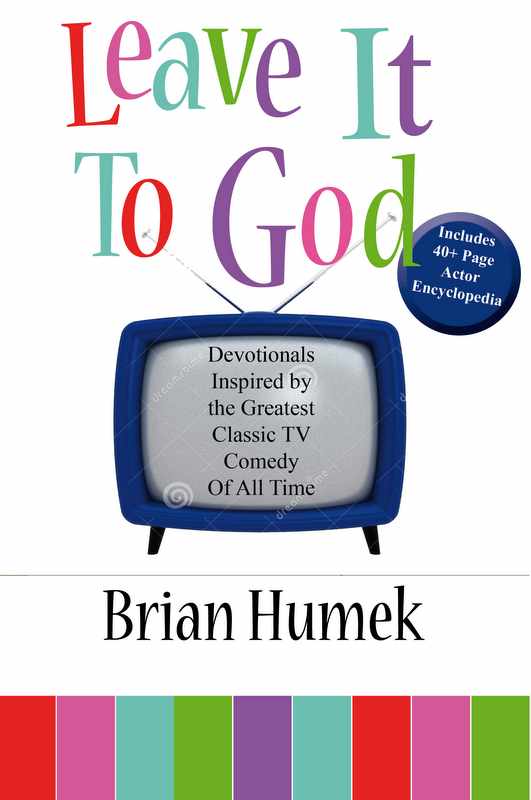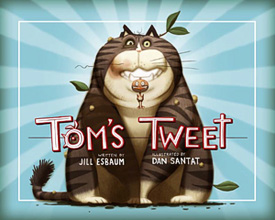chapter 18
conflictions
 Starbucks vs. Seattle ’s Best Coffee, now there’s a conflict. At least it used to be before Starbucks bought out their rival. I’m sure there are differences loyal Seattle’s Best Coffee customers could inform us all about, but in 2002 they and Starbucks became one company, although not in name. A bigger conflict still, is a Rex Sox girl marrying some schmuck from New York, a lifelong Yankees fan, and then they have kids. Oh, what’s going to happen to those kids? I could picture each parent, since they’re die hard fanatics for their respective teams, sneaking into their kid’s rooms, whispering stories of Yankee and Red Sox glory into their ears as they sleep.
Starbucks vs. Seattle ’s Best Coffee, now there’s a conflict. At least it used to be before Starbucks bought out their rival. I’m sure there are differences loyal Seattle’s Best Coffee customers could inform us all about, but in 2002 they and Starbucks became one company, although not in name. A bigger conflict still, is a Rex Sox girl marrying some schmuck from New York, a lifelong Yankees fan, and then they have kids. Oh, what’s going to happen to those kids? I could picture each parent, since they’re die hard fanatics for their respective teams, sneaking into their kid’s rooms, whispering stories of Yankee and Red Sox glory into their ears as they sleep.
Baseball is a game of conflict, umpires vs. managers, pitchers against hitters and base stealers being gunned down by catchers with awesomely powerful arms. There’s also the conflict between the American and National leagues. That pesky designated hitter rule in the American League takes all the strategy out of the game for its managers while the National League breathes tradition omitting such a stupid rule. Okay, you now know in which camp I pitch my tent. Then there’s that conflict at the Field of Dreams. Not familiar with the Field of Dreams? It began as a book titledShoeless Joe by Canadian novelist William P. Kinsella. Years later, a movie was adapted from the book for Universal and the title changed to Field of Dreams with Kevin Costner cast to play the lead character, Ray Kinsella.
Field of Dreams is the story of a farmer who hears a mysterious voice while working in his cornfield. If you build it, he will come. “Build what? Who will come?” wonders Ray Kinsella. Build a baseball diamond in the middle of his corn? That’s what the voice was whispering. Ray also heard that mysterious whispering voice while he tried to sleep. The film unwinds this mystery of who “he” is that will come if this field is built. For those of you who have yet to see Field of Dreams, I won’t spoil the ending for you.
There is a little side note to this film, a prophecy of a sort. In the film, Ray’s daughter Karin says people will pay to come to this field. They could keep the baseball diamond as it is, and people by the thousands will flock to Iowa to step on the field, reliving their childhood, a place where dreams can be realized. After all, baseball is a sport of dreams. The title is very appropriate. But even dreams can be filled with conflict which for many years was experienced every day in Dyersville, Iowa – the home of the Field of Dreams. In fact, some of that conflict still exists.
I had a personal dream fulfilled late one July afternoon. I took my son to Dyersville, Iowa and played ball with him. A trip to the Field of Dreams is something which must be experienced personally. But you better go before the new owners totally destroy the area with their new baseball complex consisting of 24 playing fields, dorms, an Olympic size swimming pool, etc. etc. etc. Soon after our return home from the Field of Dreams, we watched the movie once more. We also watched an assortment of interviews with the director and others and they talked about how the location was found. The land which became the baseball field, until 2007, was owned by two different families. The Lansing family owned the house and most of the field. The Ameskamp family owned left field and third base. The website,sportshollywood.com has written a treatise on the Field of Dreams and the bitter rivalry and conflict that existed between the owners. They explain it this way:
It’s the Yankees vs. the Mets — an Iowa “subway series:” Two rival franchises in the same town, battling for the same tourist dollar and city support. But the competition here has degenerated into property lines, legal threats, and character attacks. In fact it’s beyond any ballgame comparisons. It’s the civil war! Right fielder versus left fielder, neighbor against neighbor, love versus commerce, and integrity versus greed.
The bitter rivalry, which has never been mentioned on tourist websites advertising the Field of Dreams, is kind of funny, not the humorous kind of funny, but the sick and strange kind of funny. Here’s a film about mending relationships and it seems to have destroyed the relationship between the Ameskamp and Lansing families permanently. A brochure produced by the Lansings, at the time we visited, struck out at the Ameskamp’s souvenir stand for being owned by out of state investors. The “other” owners, the Ameskamp family, wanted to commercialize their part of the field, we readers were told. The Ameskamp’s were the “bad” guys in this rivalry. But for being the “bad” guys in this ordeal, they sure had friendliness as a good public relations tool. We couldn’t have received better treatment our afternoon at the Field of Dreams if we had thought it out for days and written a “friendliness” outline.
Walking towards the Lansing house and their souvenir shop was an entirely different story. We were shocked at the unfriendly nature of a clerk in the Field of Dreams Movie Site gift shop. My son and I were only looking at postcards and I think the prospect of us not buying anything too expensive put the clerk in an unfriendly mood. Maybe her dog had been run over by some visitor wearing an “Iowa is Hell” t-shirt. Who knows? I should just give her the benefit of the doubt. It wasn’t till later, after talking to the extremely friendly clerk at the Left and Center gift shop that I found out there was some conflict in this icon of American day dreaming. I’m not too sure how deep the rift went, but a clerk in what I call, the “nice” gift shop, replied to my repeated probing on the rivalry, “We try our best to get along.”
Speaking of the friendliness of the Ameskamp family, Al and Rita’s granddaughter personally took my son on a tour through the seven foot corn stalks where she showed him some deer droppings, shared her sports drink with him, and played hide and seek. We felt compelled after that friendliness to buy some real souvenirs from her grandmother’s shop. We wished this young girl a happy birthday, which would be a few days later, and off we drove, away from the Field of Conflict.
How could this conflict exist? The Field of Dreams is a place where no one strikes out (I think it’s actually a rule, or it was). This is a place where balls, gloves, and bats are provided to visitors by the nice gift shop (until they were stolen). How can there be conflict here? But there was conflict and still is conflict in Dyersville. The Stillman family from Oak Lawn, Illinois bought the property from the Lansing family in 2012 (the Ameskamp family sold their part of the field to the Lansings in 2007). The Stillmans now plan a huge baseball complex for traveling youth teams, similar to one found at the Baseball Hall of Fame in Cooperstown, NY. Even into mid-2013, there are suits and counter-suits about the building of this sports complex and the complete destruction of a valuable part of Americana. Again, you know in which camp I’m pitching my tent. The Ameeskamp family and a few others are now being sued by the Stillman family and their corporation for trying to stop the development. And to think, years ago, it was the Ameskamp family which was accused of trying to commercialize the baseball field.
Field of Dreams is one of my favorite movies ever. This is true, despite my love for what some might call “girl” movies which others might call “chick flicks” or “romance” films. Among some of my favorites in that genre are many starring John Cusack, American Sweethearts is one such film. At a crucial point in the film, John Cusack spurts out in confused anger, “I feel so conflicted!” And no, he wasn’t wondering out loud about which gift shop in Dyersville, Iowa to visit.
I too know his feeling of confliction very well. I’ve felt it many times. There’s the time the Chicago White Sox were in the World Series while I’m a huge Chicago Cubs fan. And then that time I lost my full-time job in ministry and I needed to feed my family. I didn’t want to take any old preaching job, but I needed to pay the bills. I think many a preacher is preaching today just to pay the bills, but should I have become part of that club? That was my confliction and instead of joining that club, I stayed unemployed. I was blessed with a big tax refund and we survived a bit longer, but we struggled mightily for quite a few months. We still are struggling if I must admit the truth, so buy a copy of this e-book for someone else, please. Then there is my time at TCC, better known here in Texas as Tarrant County College.
Beginning a new ministry focused on reaching 18-35 year old pre-Christians, I decided to hang out at our local college. What a perfect place to find some progressive people who may want to do some things different, some people who are tired of ritual and tradition. I didn’t know where else to start, so I began hanging out with the Christian Student Ministries group on campus. Yep, that’s their name. They are Christians. They are students. And this was their ministry. Alas, their name, Christian Student Ministries. I’ve gained a couple new friends from among this group. I always hoped one of them would get into leadership so they could propose a name change.
I met the two co-presidents, Johnny and Joseph and a member named Jason on my first visit. They were very friendly, but when they began talking about an open-air preaching event they were going to have on campus, I showed my cards. In my mind, I didn’t think such an event would go over well on a college campus. They were even going to stand up on a little pedestal and do their preaching. It didn’t end up as bad as it first sounded to me, but I nevertheless, had to make a suggestion. Since these were college kids, I thought they would be really open and progressive. I thought they would embrace the radical. I thought wrong. I asked a stupid question.
“Has anyone here ever read Blue Like Jazz?”
You would have thought I’d said, “The Cubs have just won the World Series!” There were some rolled eyes, chuckles, and then Joseph proudly said, “We don’t like that book here.” I guess he was referring to the student ministry, this Christian one.
“We don’t like that book or anything related to the emergent church. Some of our members like it, but we don’t,” continued Joseph.
I had only mentioned the book because of a wonderful confession booth idea I’d read about within its pages. I thought that would be better received on a college campus than preaching. So immediately, I felt like I didn’t belong on this campus, or at least not with the Christians who “officially” met on campus. A couple months later, I was sitting in one of their meetings. Underneath a chair of a girl I would later know as Abby, sat two books, a Bible, and Blue Like Jazz.
“Oh,” I thought, “She’s one of the ‘some’ Joseph had talked about that first day.
Abby and her sister Hannah were and still are a breath of fresh air and a delight to be around.
I continued to visit the meetings of this Christian group. Oh my, they do think quite differently than I do about many subjects, evangelism, the nature of the fall of man and its consequences, baptism, worship styles, salvation, etc. If I’d only engage in more conversation, I’m sure I’d find many more subjects on which we believe differently. Now I don’t have a big problem with these differences. I can understand and accept their idea of evangelism as “preaching to” instead of “walking alongside with.” I can accept, if not endorse, their difference of belief regarding baptism, worship styles, and point of salvation. I can accept our differences, but some of the members might not be so inclined to accept my views being different. But their idea of the fall of man and its consequences is mighty unacceptable to me. Their view is directly influenced by their viewing a DVD on evangelism that says we are all just bad wretched people and we have no good in us at all. This is where I have to draw the line.
I was called on the carpet once or twice about my view. My belief is we are created good people but we let the muck and grime and smog of sin in this world blot out our goodness. I say, and I believe the Bible teaches we were created as masterful pieces of art by God. The problem becomes that after being in this world for a while we need a good cleaning. Some of us need scrubbed down with steel wool every hour or so, but we all need cleaned at least a little bit. We need a way to become those masterpieces once again. This comes from the sacrifice of Jesus upon the cross, and his eventual resurrection. Every time I’d mention we were created good and can be good, I was told that Jesus even said there was no one good but God (Luke 18:19). But wasn’t Jesus simply understanding the motivation of the one asking the question? He is God after all. Even if Jesus is just a great teacher like many claim, wouldn’t such a great teacher understand the motivation of a question when it is asked? The man in Luke 18 was trying to show he was good enough to go to heaven. Jesus then answered a specific question by making a blanket statement.
Then one day I read my Bible too. I read that the man who provided the tomb for Jesus, a guy named Joseph, was labeled by Luke as a “good” man (Luke 23:50). So was Luke calling Jesus a liar? Not at all. There are other passages that speak about people growing old enough to choose evil. I guess that means they weren’t evil before that. There are other verses that speak of the innocence (I would call it goodness) of younger children. The big disagreement, if we looked closer, is that they may misunderstand what I’m saying. This is it. I think we’re good people covered over with muck. I do not think we are good enough to get to heaven by our own good works. So to boil it down, I say we’re good, not good enough.
Theological differences can certainly bring about a sense one does not belong. I’ve not let that deter me from befriending as many as I can at TCC. As a matter of fact, the open-air preaching event went off without any problems. It was actually a fun time of bonding and meeting people we wouldn’t have met otherwise. My bride was able to meet Abby and Hannah. They hit it off immediately. My bride home schools our son and Hannah and Abby were also home schooled. God willing, my son will turn out with such a combination of wisdom and smarts as Abby and Hannah have.
Then there were two guys I met named Tim and Tony. They were playing chess on the gigantic board in the middle of the courtyard where the preaching took place. Tony listened to Joseph present the gospel through a method popularized by Kirk Cameron from Growing Pains fame. I didn’t think things were going to go very well. There were even reports some people were going to picket the preaching. I really enjoyed the interaction between Joseph and one student who had volunteered to answer some questions. It began with a simple question, “Who was born in a coconut at the bottom of the ocean?” Sponge Bob Squarepants of course. That lead to the question, “Does anyone think they’re a good person?”
Tony and Tim were discussing Joseph’s topic. My wife pointed to them and told me what they were discussing. I went over and said hi. I asked what they thought. Tony wore a cross and was more outspoken than Tim. He said he didn’t agree with everything Joseph had said; I agreed with Tony. We talked more. I told him about our personal ministry with Zach’s House, how we try to do as much good as we can for the community. He told me he was a part of a group that is trying to do more good. Tony’s group finds high school drop outs and gets them into a program which allows them to obtain their diploma. “What group is that?” I asked. His reply shocked me only because I’m from Chicago. “The Latin Kings,” he replied. Oh my, The Latin Kings are a street gang from Chicago; they’re not some social group. Tony told me there has been a misconception about the Latin Kings. They are trying to do more good. Tony was even authorized to go into local chapters and help clean them up. Of course, that caused me to ask a question.
“What kind of things do the local chapters do that need cleaning up?”
Tony reaffirmed my belief about the Latin Kings.
“They sell crack, have street fights, and other stuff.”
Okay, a street gang, or maybe a street gang in transition.
What I’m impressed with, and conflicted about is that God has used this Christian group to help me both belong and not belong. I may not have agreed with the open-air preaching that Joseph and Johnny had pushed for and got permission to undertake, but it turned out great. There were no protesters, some relationships began, and others were strengthened. Tony and I even talked about attending a Chicago Cubs game together in June when they were scheduled to play down the road in Arlington. As we talked, he had seen my Cubs hat. That provoked more talk, a discussion about our love for the lovable losers who hail from Chicago. That wouldn’t have happened without the open air-preaching.
Praise God for Johnny and Joseph and the others who find that form of evangelism to be their passion. I won’t say it’s wrong or bad. Abby, one of the group members I’ve become friends with has taught me this. Even she wasn’t so thrilled with the idea of preaching to antagonistic college students. She’s spoken a few times about an email she had sent Joseph concerning the event. Then she apologized to him for the email. She admits she came to understand that God can use different people in different ways. Since talking with Abby, my feelings have changed some too. I’ve even given Joseph some books on preaching that may help him in his desire to be a full-time senior pastor one day. God bless him and all of his future ministry work.
While Joseph and some others may have fun debating, I’ve found that others in the group are more concerned with connecting with friends. These guys and girls are fun to hang around and I learn much from them. We may not think alike theologically; I know we don’t. But those differences don’t make up the bulk of our conversations. We simply connect on a different level. I think of Mark. He’s one of the greatest guys in the group. He’s friendly no matter what. He doesn’t care what you believe or think. Mark wants to be everybody’s friend. I remember the day I was sitting across from the room where the Christian group met. Mark came over to sit with his friend and the entire atmosphere changed.
I had been reading and there was a girl on the couch to my right keeping to herself. There was a guy on the couch to my right sleeping. He woke up when Mark and I began talking. Then Hannah came and sat down with us. We all began to discuss school and life. Then Mark engaged Rachael (the girl who had been keeping to herself) in conversation. The guy on the left (Wesley) entered our conversation too.
Although the Christian group says in its constitution and mission statement that they exist to evangelize and help others become Christians, it wasn’t until members of this group sat on these couches and engaged others and entered their stories, that I saw any real steps taken toward evangelism and loving others, at least in a way I connect with. That afternoon, I noticed something really cool about Mark, he has even befriended a guy who claims to be a medium. Mark asked him to visit the Christian group meeting. The guy kind of blew us off.
“You won’t want me in your group, I’m a medium.”
I quipped back, “Like Whoopi Goldberg in Ghost?”
The guy responded, “Yeah, but only real.”
Guys like Mark, who befriend ghost talkers, are great people. Those are people I love to be around
So the question arises, “Was I really conflicted about my status of belonging on the TCC campus and with their Christian group?” The answer is a resounding “NO!” I was simply blessed by God who works things out in all situations because when I think about it, I was blessed to have hung out with that group. It did my soul good.
Now the only question that remains in my mind is whether the people in Dyersville, Iowa will ever find a little sliver of unity concerning the Field of Dreams movie site. The War Between the States ended in four years, the Dyersville conflict has now spanned four different decades. That’s a long time to dispute over some grass in Iowa.
Now that you’re done, please visit the Save the Field of Dreams facebook page.





 My name is Brian Humek. I love talking about God and about writing.
My name is Brian Humek. I love talking about God and about writing. 
 Due to antiquated copyright laws, I cannot include lyrics, not even two words of lyrics for any copyrighted song in my book Summer of Sharona.
Due to antiquated copyright laws, I cannot include lyrics, not even two words of lyrics for any copyrighted song in my book Summer of Sharona. 
 Starbucks vs. Seattle ’s Best Coffee, now there’s a conflict. At least it used to be before Starbucks bought out their rival. I’m sure there are differences loyal Seattle’s Best Coffee customers could inform us all about, but in 2002 they and Starbucks became one company, although not in name. A bigger conflict still, is a Rex Sox girl marrying some schmuck from New York, a lifelong Yankees fan, and then they have kids. Oh, what’s going to happen to those kids? I could picture each parent, since they’re die hard fanatics for their respective teams, sneaking into their kid’s rooms, whispering stories of Yankee and Red Sox glory into their ears as they sleep.
Starbucks vs. Seattle ’s Best Coffee, now there’s a conflict. At least it used to be before Starbucks bought out their rival. I’m sure there are differences loyal Seattle’s Best Coffee customers could inform us all about, but in 2002 they and Starbucks became one company, although not in name. A bigger conflict still, is a Rex Sox girl marrying some schmuck from New York, a lifelong Yankees fan, and then they have kids. Oh, what’s going to happen to those kids? I could picture each parent, since they’re die hard fanatics for their respective teams, sneaking into their kid’s rooms, whispering stories of Yankee and Red Sox glory into their ears as they sleep.
